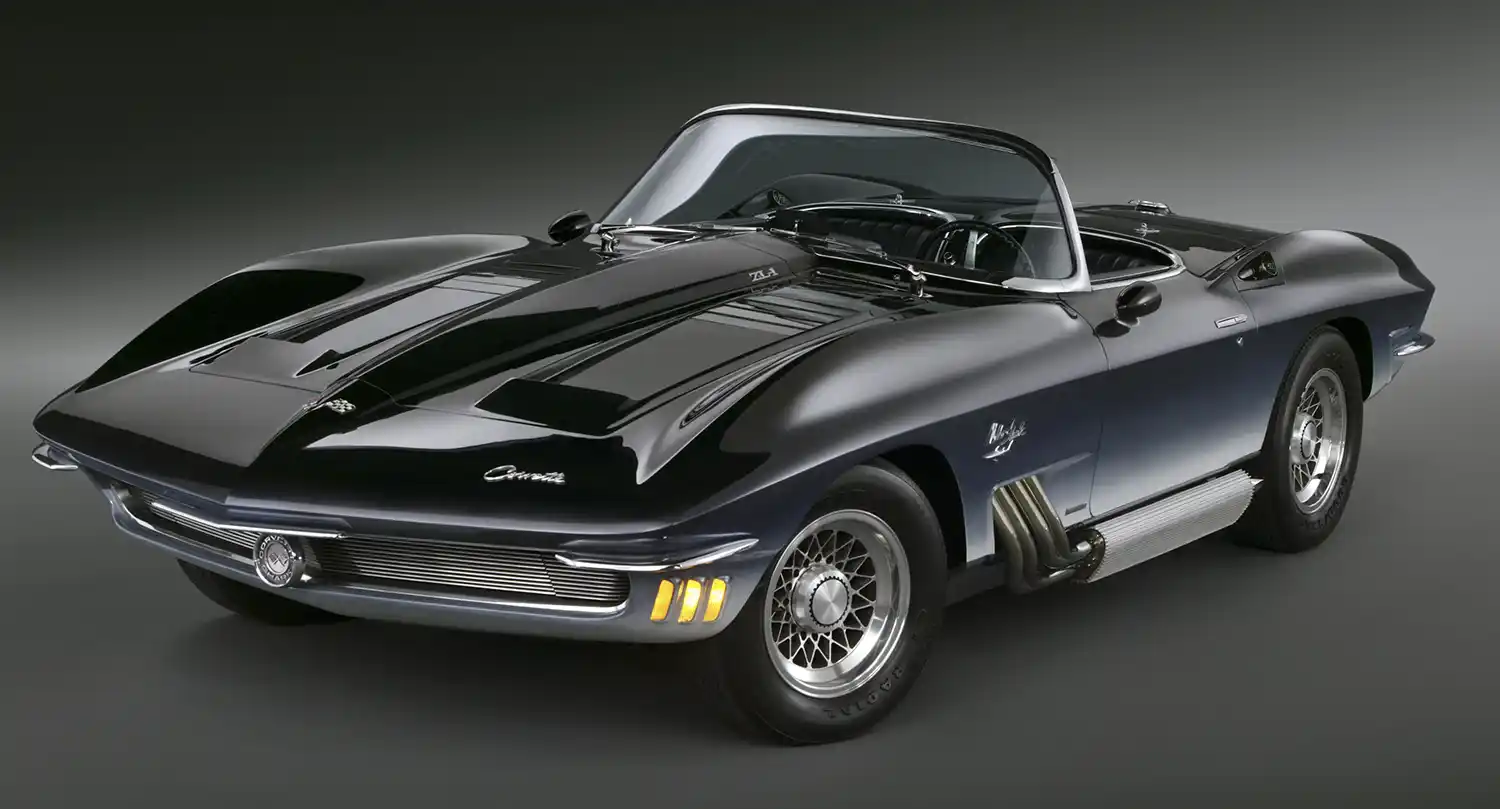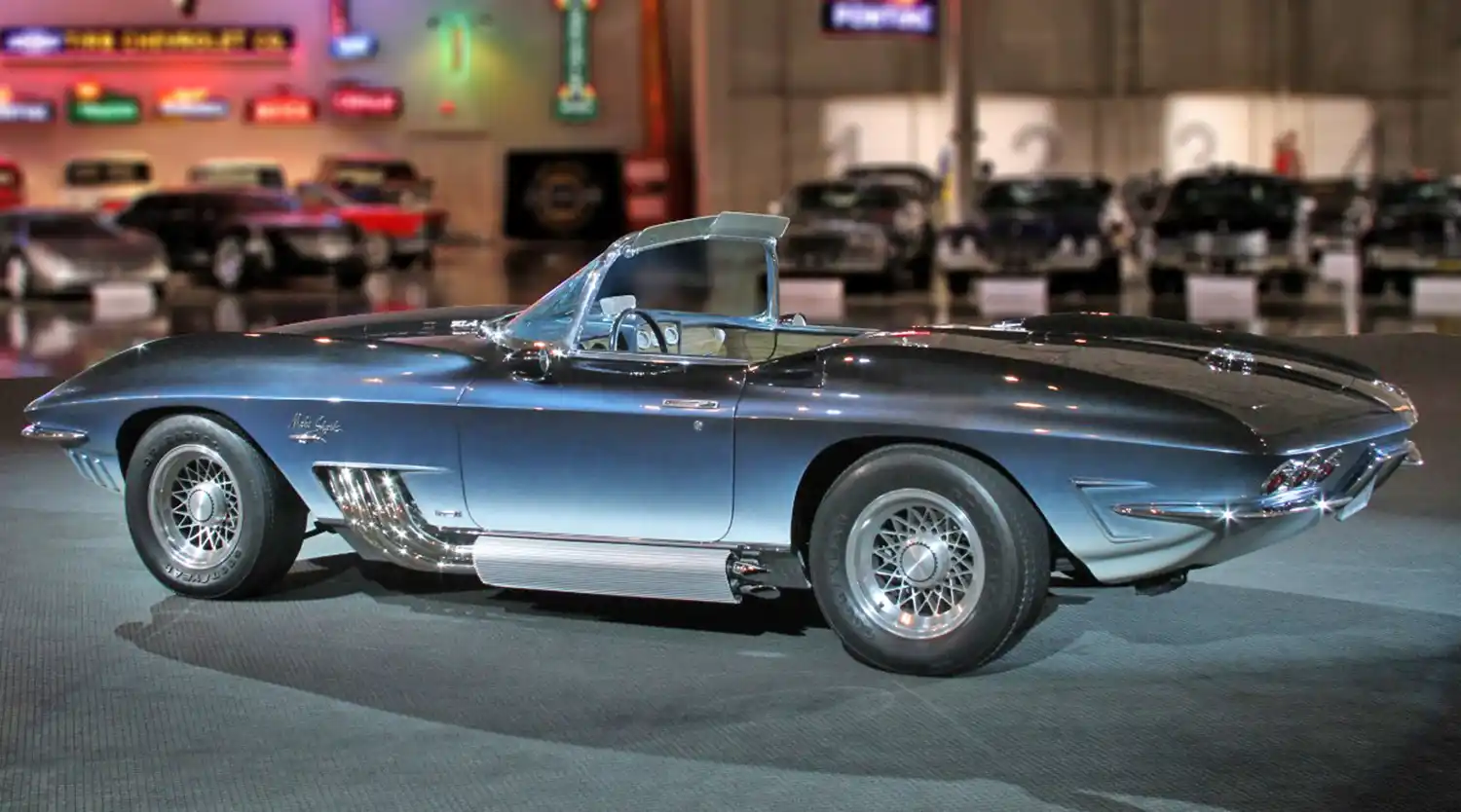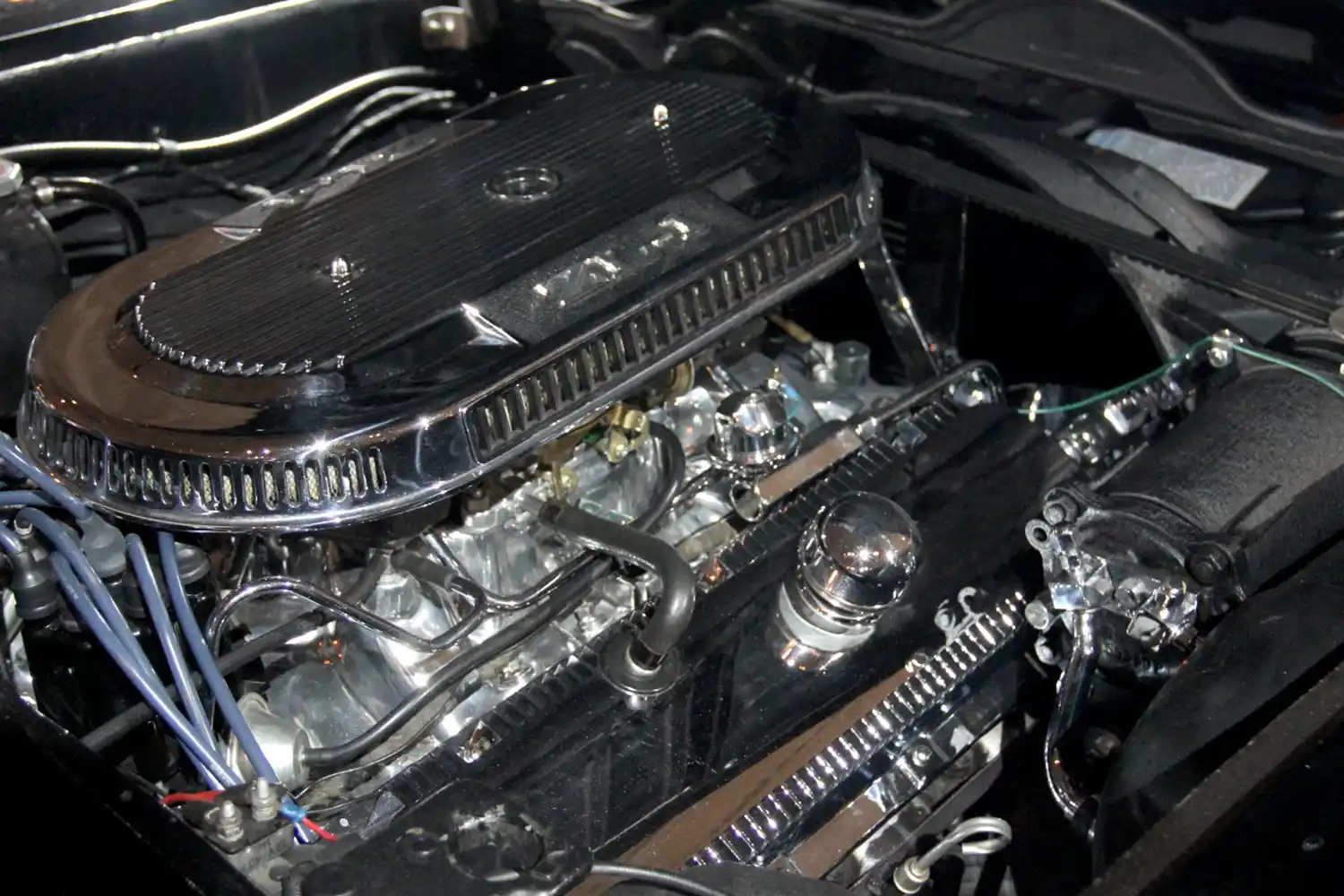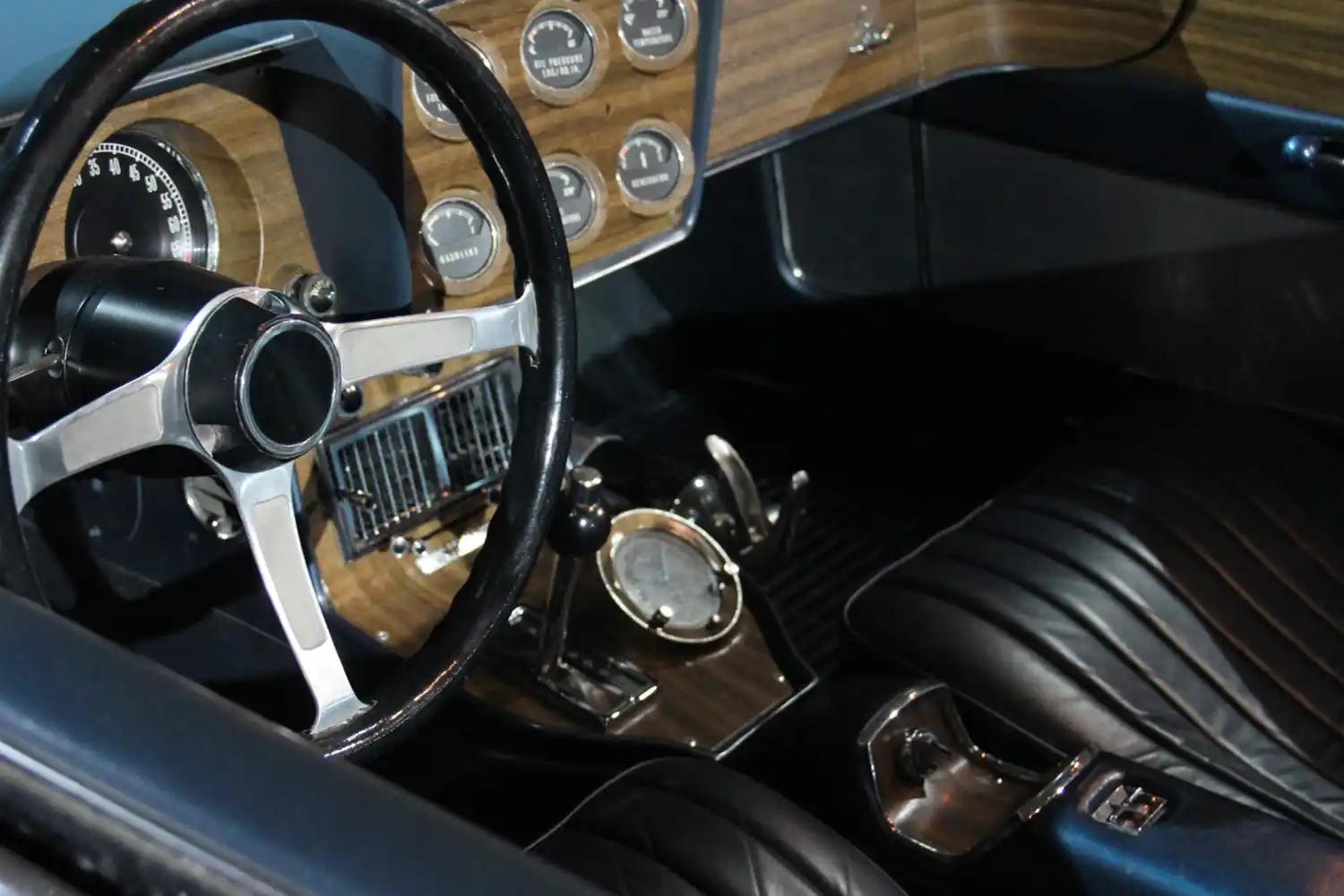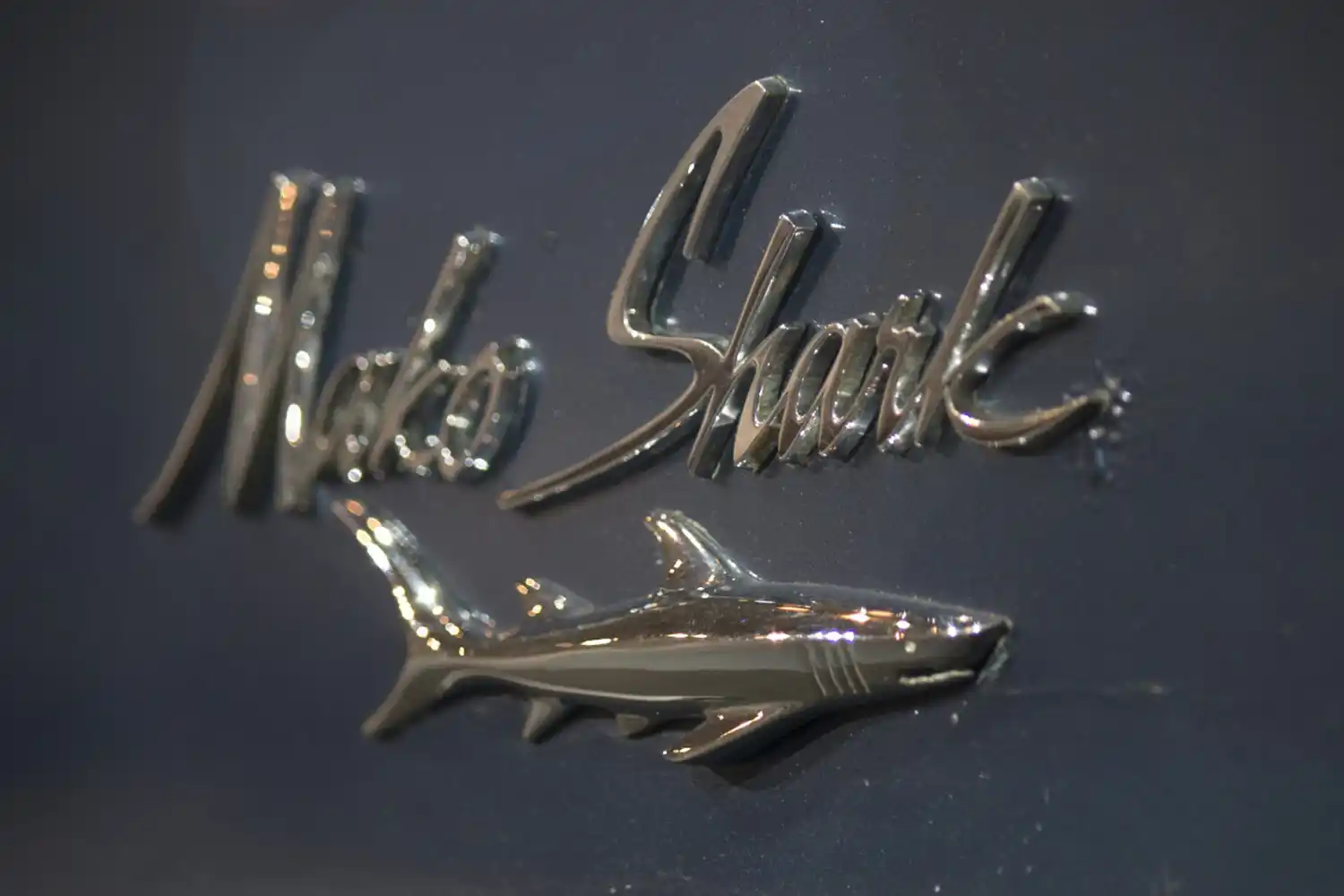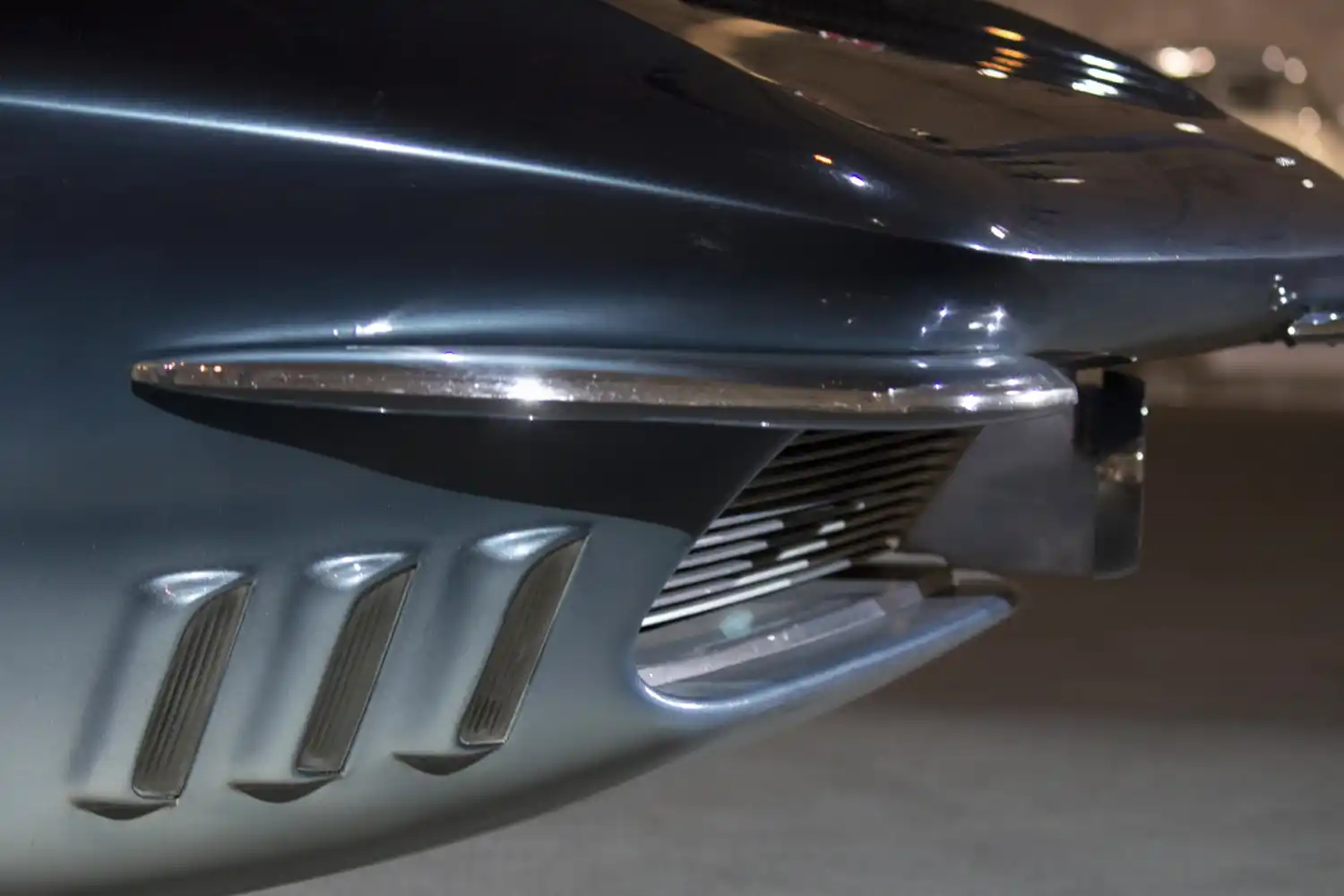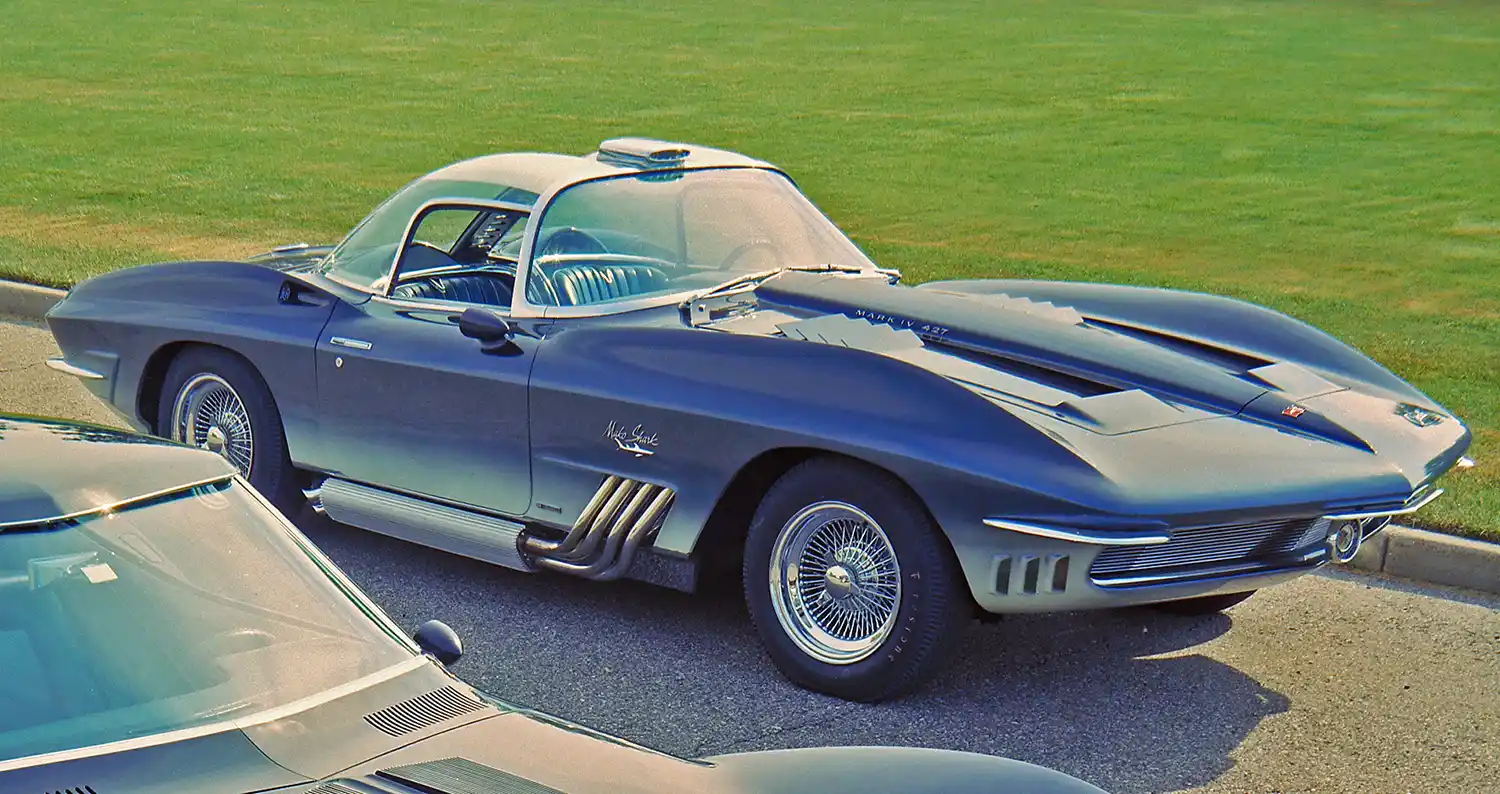
The 1961 Mako Shark I Corvette stands as a pivotal concept car in the history of the Chevrolet Corvette, embodying the visionary design philosophy of William L. Mitchell, then Vice President of General Motors Styling Staff (now known as General Motors Design Center). The genesis of the Mako Shark I lay in Mitchell’s personal encounter with a Mako shark caught off the coast of Florida. Captivated by the shark’s sleek, aggressive form and its unique iridescent blue upper surface blending into a white underbelly, Mitchell directed his design team to capture this aquatic predator’s essence in automotive form. The resulting Mako Shark I was more than just a show car; it was a rolling experiment in design and engineering, its radical lines and innovative features heavily influencing the styling of future Corvette generations, particularly the C2 Sting Ray.
Design Inspired by the Deep: The design of the 1961 Mako Shark I was a radical departure from the Corvettes that preceded it, directly mirroring the fluid and menacing form of its namesake. The car featured a long, low hood, sharply pointed nose, and a Kamm-style tail, all contributing to its aerodynamic and aggressive stance. The side profile was characterized by flowing lines that mimicked the shark’s body, and the overall impression was one of motion and power, even while stationary. Perhaps the most striking design element was its unique vari-colored paint scheme, meticulously applied to emulate the Mako shark’s natural camouflage. The iridescent blue upper surfaces seamlessly transitioned into white along the sides and lower body, a testament to the artistry and attention to detail of the GM styling team. This paint finish alone made the Mako Shark I an unforgettable visual spectacle.
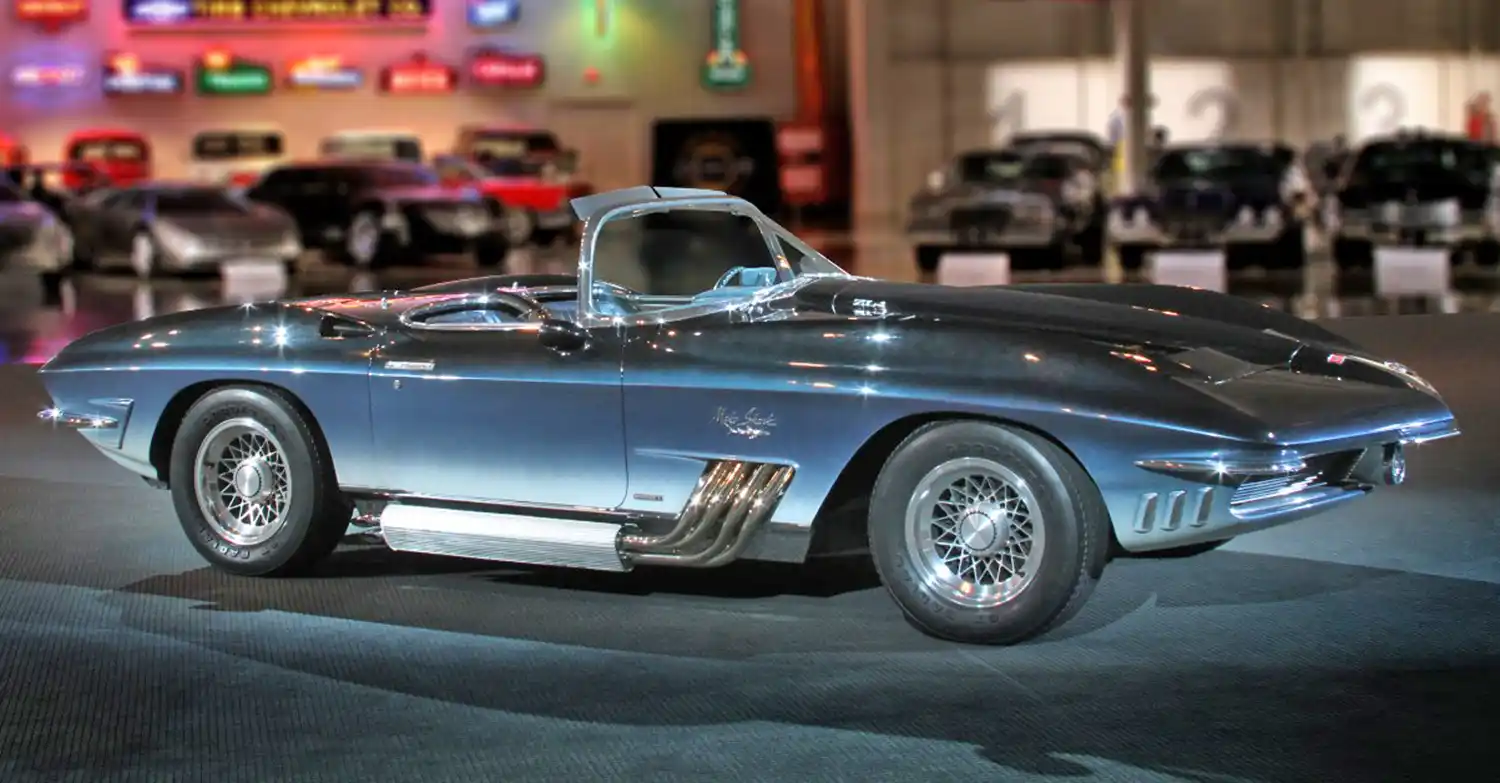
Experimental Power and Performance: As a concept car, the 1961 Mako Shark I served as a testbed for various experimental engine configurations, showcasing GM’s engineering prowess. Over its lifespan, the vehicle was fitted with a number of different powerplants, each representing cutting-edge technology for its time. These included a supercharged engine equipped with four side-draft carburetors, hinting at high-performance potential. Another iteration featured a fuel-injected engine, exploring the benefits of more precise fuel delivery. The Mako Shark I also saw the installation of a V8 engine with two four-barrel carburetors, a classic setup for maximizing power output. Interestingly, the text provided indicates that the car was later fitted with a production 1969 427 cubic inch ZL-1 Chevrolet V8 engine. This all-aluminum big-block, equipped with a single four-barrel carburetor, was capable of producing upwards of 425 horsepower, demonstrating the concept car’s ability to house and showcase significant power. These engine experiments underscored the Mako Shark I’s role in exploring the future of Corvette performance.
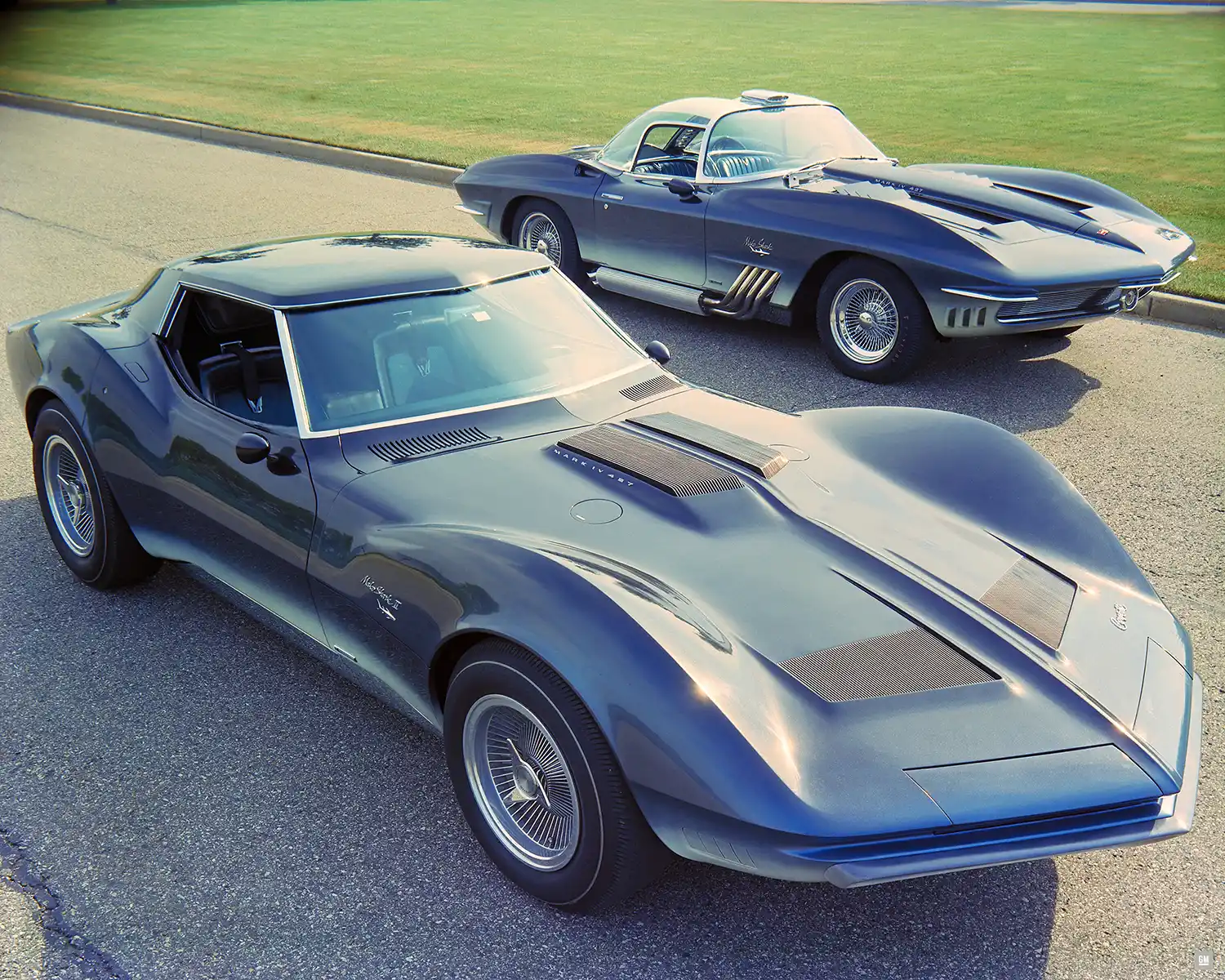
Innovative Features and Influence: Beyond its striking design and powerful engines, the 1961 Mako Shark I incorporated a number of innovative features that further solidified its status as a forward-thinking concept. While specific details on all experimental features are limited in the provided text, the very nature of a concept car implies the exploration of new technologies and design solutions. The Mako Shark I’s most significant contribution was its profound influence on the design of the second-generation (C2) Corvette Sting Ray, which debuted in 1963. The Mako Shark I’s long hood, sharp nose, flowing lines, and overall aggressive posture were clearly evident in the production Sting Ray, demonstrating the power of Mitchell’s vision and the impact of this concept on the Corvette’s enduring design language. The Mako Shark I effectively bridged the gap between the more traditional styling of the C1 Corvette and the revolutionary design of the C2, ensuring the Corvette’s continued evolution as an American icon of performance and style.
A Design Legend: The 1961 Mako Shark I Corvette remains a legendary concept car, not just for its stunning visual presence but for its tangible impact on the future of the Corvette. Bill Mitchell’s inspiration from the natural world, combined with GM’s engineering capabilities, resulted in a vehicle that captured the imagination of the public and the automotive industry alike. Its radical design elements and experimentation with high-performance engines foreshadowed the direction that Corvette styling and performance would take in the years to come. The Mako Shark I stands as a testament to the power of automotive design to push boundaries and shape the future, solidifying its place as an enduring icon in Corvette history and a symbol of American automotive innovation.
Summary
- Visionary concept car inspired by the Mako shark.
- Designed under the direction of William L. Mitchell.
- Featured a distinctive iridescent blue and white paint scheme.
- Experimented with various powerful engines, including a supercharged unit and a ZL-1 V8.
- Profoundly influenced the design of the C2 Corvette Sting Ray.
- Embodied groundbreaking design elements and forward-thinking engineering.
- Remains a legendary icon in Corvette history.
Disclaimer: Information regarding this concept vehicle is based on available historical data and may include details about experimental features. Specific configurations and performance figures may have varied over the car’s lifespan.
Source: GM Heritage
AI Assistance: Gemini
